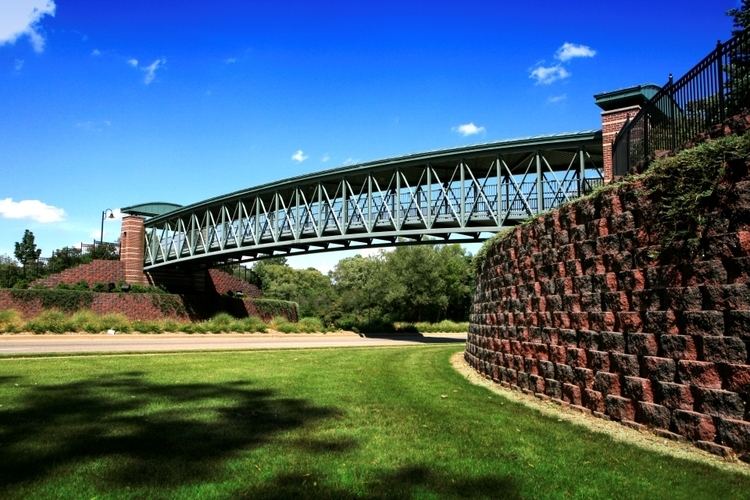Country United States County Kalamazoo Elevation 879 ft (268 m) Local time Friday 9:50 AM | State Michigan Incorporated December 31, 1963 Demonym(s) Portager Population 47,523 (2013) | |
 | ||
Weather 13°C, Wind S at 24 km/h, 66% Humidity Points of interest Air Zoo, Portage Creek Bicenten, Ramona Park, Portage Creek Bicenten, Austin Lake | ||
Austin lake fishing portage michigan
Portage is a city in Kalamazoo County in the U.S. state of Michigan. The population was 46,292 in the 2010 census. It is the smaller of the two main cities included in the Kalamazoo-Portage Metropolitan Statistical Area, which has a population of 326,589 as of 2010.
Contents
- Austin lake fishing portage michigan
- Map of Portage MI USA
- Historical charles van riper house portage michigan
- Geography
- 2010 census
- 2000 census
- References
Map of Portage, MI, USA
Portage is adjacent to the southern boundary of the City of Kalamazoo. The city was incorporated from the entirety of the former Portage Township on December 31, 1963.
There are two public high schools in Portage, Portage Central and Portage Northern. The pharmaceutical company Pfizer also has manufacturing operations located there, which in recent years has caused much controversy due to layoffs. Stryker Corporation also has a large manufacturing presence in the city and is a worldwide leader in medical equipment, instruments and imaging technologies. Portage is also home to FEMA Corporation, a growing hydraulic valve manufacturing company.
Portage is known for its extensive network of historical parks and trails used for cycling, walking, canoeing, and other recreational activities. Since the creation of the Portage Bikeway system in 1989, the trails have expanded to over 50 miles (80 km), over five times as long as the city’s expressways. Portage is also home to the Kalamazoo Air Zoo.
Historical charles van riper house portage michigan
Geography
According to the United States Census Bureau, the city has a total area of 35.17 square miles (91.09 km2), of which 32.23 square miles (83.48 km2) is land and 2.94 square miles (7.61 km2) is water.
Austin Lake is in the southeast part of the city and was named for Moses Austin, who had emigrated to Portage Township from Genesee County, New York in 1833. A settlement grew on the north shore of the lake, known as Austin or Austin Lake. A post office named "Austin's Lake" was established on May 18, 1850, with Austin as postmaster, and operated until August 15, 1853. The place was also a station on the Grand Rapids and Indiana Railroad in 1867.
2010 census
As of the census of 2010, there were 46,292 people, 19,199 households, and 12,426 families residing in the city. The population density was 1,436.3 inhabitants per square mile (554.6/km2). There were 20,559 housing units at an average density of 637.9 per square mile (246.3/km2). The racial makeup of the city was 86.9% White, 4.9% African American, 0.4% Native American, 3.8% Asian, 1.0% from other races, and 3.0% from two or more races. Hispanic or Latino of any race were 3.1% of the population.
There were 19,199 households of which 32.4% had children under the age of 18 living with them, 50.1% were married couples living together, 10.9% had a female householder with no husband present, 3.8% had a male householder with no wife present, and 35.3% were non-families. 29.1% of all households were made up of individuals and 10.5% had someone living alone who was 65 years of age or older. The average household size was 2.40 and the average family size was 2.98.
The median age in the city was 38.1 years. 24.8% of residents were under the age of 18; 7.9% were between the ages of 18 and 24; 26.7% were from 25 to 44; 26.9% were from 45 to 64; and 13.6% were 65 years of age or older. The gender makeup of the city was 47.9% male and 52.1% female.
2000 census
As of the census of 2000, there were 44,897 people, 18,138 households, and 12,134 families residing in the city. The population density was 1,394.2 per square mile (538.3/km²). There were 18,880 housing units at an average density of 586.3 per square mile (226.4/km²). The racial makeup of the city was 90.75% White, 3.73% African American, 0.30% Native American, 2.64% Asian, 0.02% Pacific Islander, 0.70% from other races, and 1.84% from two or more races. Hispanic or Latino of any race were 1.93% of the population.
There were 18,138 households out of which 34.2% had children under the age of 18 living with them, 54.4% were married couples living together, 9.7% had a female householder with no husband present, and 33.1% were non-families. 27.2% of all households were made up of individuals and 8.4% had someone living alone who was 65 years of age or older. The average household size was 2.45 and the average family size was 3.01.
In the city, the population was spread out with 26.4% under the age of 18, 8.5% from 18 to 24, 29.9% from 25 to 44, 23.4% from 45 to 64, and 11.8% who were 65 years of age or older. The median age was 36 years. For every 100 females there were 92.1 males. For every 100 females age 18 and over, there were 88.8 males.
The median income for a household in the city was $49,410, and the median income for a family was $61,285. Males had a median income of $42,377 versus $29,399 for females. The per capita income for the city was $25,414. About 3.1% of families and 4.8% of the population were below the poverty line, including 4.9% of those under age 18 and 4.2% of those age 65 or over.
